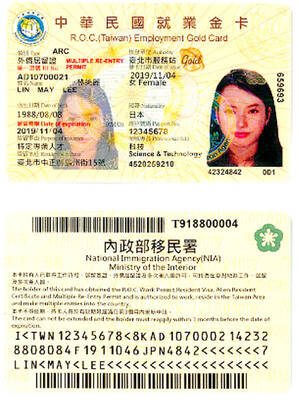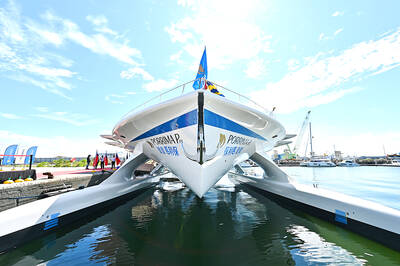Most of us have a box or book of old photographs somewhere — precious memories of times and people we hold dear.
Thanks to the paper on which those photos are printed — and the ease with which paper can be handed down — those memories are intact.
But what about future generations? If we copy our digital photographs, video or sound clips onto CDs or DVDs, will our heirs even have the equipment necessary to read them?
It’s a question that deserves careful consideration, especially since many of us today are spending countless hours amassing irreplaceable memories and, for the first time, entrusting those memories to various forms of media that are not only fragile but can also quickly become obsolete.
That’s why if you want to pass down the memories that you’re capturing with your digital equipment, it’s vital that you develop a strategy for preserving them — and to know the pros and cons of the various storage media available today.
CDs and DVDs
CDs and DVDs are the first types of storage people think about when they want to copy some files and stash them for future generations. Unfortunately, there are a couple of serious problems with this approach. First, the longevity of writable CD and DVD disks varies greatly. Some early writable CD disks that were supposed to last for 40 years or more have been known to become completely unreadable after only a couple of years in storage. And today’s bargain-priced writable CDs and DVDs are generally not sold on the basis of how long they’ll last.
Responding to the demand for more dependable, “archival” quality disks, however, some firms — including Verbatim, Memorex, and Fuji Film — have created special archival-quality writable media. These disks have a data surface that optimizes both the recording performance and the longevity of the disks themselves. They’re more expensive, as you might imagine, but if you’re using your disks to preserve memories, a little added cost should not be your primary consideration.
Archival or not, what might be of more concern is the rapid pace of progress in technology — and the possibility that the CDs and DVDs you create for posterity today won’t even be readable by the computer equipment in use a generation from now. A look at recent history tells the story. Twenty years ago, the five-and-a-half-inch floppy drive was ubiquitous. Today, floppy drive readers of that size are impossible to find at most electronics retailers. If you had some precious files stored on a 5 1/4 inch floppy drive, you’d have to go to great lengths today to find a computer that could read the disk.
Hard, flash drives
If the digital memories you want to hand down consume lots and lots of storage space, hard drives might be your best choice. The way to go here would be to purchase an external hard drive — available now in sizes up to 1.5 terabytes — that can be connected to the computer with a USB cable. Update the drive with your latest files regularly, but otherwise keep the drive in storage to preserve its life expectancy.
The concern with hard drives is that they’re relatively fragile. A hard drive “crash” — which refers to the drive’s read/write heads bumping into the quickly rotating magnetic platters within the drive — can render all of the data on a drive unreadable in a matter of seconds. At that point, only an expensive repair can salvage the data — if it’s salvageable at all.
Solid state drives (SSDs), which are quickly gaining ground on traditional hard drives, are not nearly as fragile. Rather than spinning magnetic platters, SSDs store your data on flash memory chips — the same kind used to store your digital images in your camera. SSDs can be used as drop-in replacements for hard drives.
Unfortunately, they’re still quite expensive: While a 1 terabyte traditional hard drive costs US$100 today, a 64 gigabyte (GB) SSD retails for about US$150. That makes SSDs almost 10 times the cost of traditional hard drives on a price/capacity basis. SSDs currently top out at around 128 GB, as well.
Online storage
Storing at least a copy of your digital memories online makes sense for a couple of reasons. First, you no longer have the concern over whether the media on which you store your files will go bad. Second, any concerns over obsolescence are largely removed. Third, you have a copy of your files off site. And fourth, you’ll theoretically be able to access your files from any computer that has an Internet connection.
The problems with online storage are cost, the speed of upload, and concerns about whether the online storage company will be around for the long haul. While many online storage companies provide a limited amount of space for free, digital photos, videos, and audio require huge amounts of storage. So you’ll quickly outgrow the amount of storage given out for free, and you’ll end up having to pay for extra space. Still, some companies offer unlimited space for a modest monthly fee.
SolutionS
While each type of media you might turn to in order to preserve your digital memories has advantages and disadvantages, there’s no fool-proof way to ensure that the digital memories you create today will be around 50 years from now.
In terms of storing your files today, to be safe, make two copies of every file and store each copy on a different type of media.
Type up instructions to be passed along to those who will take possession of the data.
Ultimately, though, even the best-laid plans can go awry, so be sure to enlist the help of “old tech” — for example, paper — when appropriate. Print out your most cherished digital photographs, for example, and keep them along with a digital copy of the originals.

GAINING STEAM: The scheme initially failed to gather much attention, with only 188 cards issued in its first year, but gained popularity amid the COVID-19 pandemic Applications for the Employment Gold Card have increased in the past few years, with the card having been issued to a total of 13,191 people from 101 countries since its introduction in 2018, the National Development Council (NDC) said yesterday. Those who have received the card have included celebrities, such as former NBA star Dwight Howard and Australian-South Korean cheerleader Dahye Lee, the NDC said. The four-in-one Employment Gold Card combines a work permit, resident visa, Alien Resident Certificate (ARC) and re-entry permit. It was first introduced in February 2018 through the Act Governing Recruitment and Employment of Foreign Professionals (外國專業人才延攬及雇用法),

CAUTION URGED: Xiaohongshu and Douyin — the Chinese version of TikTok — are tools the Chinese government uses for its ‘united front’ propaganda, the MAC said Mainland Affairs Council (MAC) Minister Chiu Chui-cheng (邱垂正) yesterday urged people who use Chinese social media platforms to be cautious of being influenced by Beijing’s “united front” propaganda and undermining Taiwan’s sovereignty. Chiu made the remarks in response to queries about Chinese academic Zhang Weiwei (張維為) saying that as young Taiwanese are fond of interacting on Chinese app Xiaohongshu (小紅書, known as RedNote in English), “after unification with China, it would be easier to govern Taiwan than Hong Kong.” Zhang is professor of international relations at Shanghai’s Fudan University and director of its China Institute. When giving a speech at China’s Wuhan

ENHANCE DETERRENCE: Taiwan has to display ‘fierce resolve’ to defend itself for China to understand that the costs of war outweigh potential gains, Koo said Taiwan’s armed forces must reach a high level of combat readiness by 2027 to effectively deter a potential Chinese invasion, Minister of National Defense Wellington Koo (顧立雄) said in an interview with the Chinese-language Liberty Times (sister newspaper of the Taipei Times) published yesterday. His comments came three days after US Secretary of State Marco Rubio told the US Senate that deterring a Chinese attack on Taiwan requires making a conflict “cost more than what it’s worth.” Rubio made the remarks in response to a question about US policy on Taiwan’s defense from Republican Senator John Cornyn, who said that Chinese

The zero emissions ship Porrima P111 was launched yesterday in Kaohsiung, showcasing the nation’s advancement in green technology, city Mayor Chen Chi-mai (陳其邁) said. The nation last year acquired the Swiss-owned vessel, formerly known as Turanor PlanetSolar, in a bid to boost Taiwan’s technology sector, as well as ecotourism in Palau, Chen said at the ship’s launch ceremony at Singda Harbor. Palauan President Surangel Whipps Jr and Minister of Foreign Affairs Lin Chia-lung (林佳龍) also attended the event. The original vessel was the first solar-powered ship to circumnavigate the globe in a voyage from 2010 to 2012. Taiwan-based Porrima Inc (保利馬) installed upgrades with